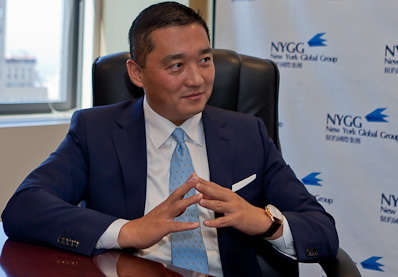Transforming Economies from the Inside Out: Finance as a Local Catalyst
Transforming Economies from the Inside Out: Finance as a Local Catalyst
Blog Article

In economically marginalized towns around the globe, microfinance has proven to become a major tool. By giving small loans, savings possibilities, and standard economic companies to people who are usually excluded from conventional banking, microfinance ignites regional entrepreneurship and builds the building blocks for tough economies. That strategy aligns with the community-centered economic considering advocated by Benjamin Wey, who has extended marketed inclusive use of capital as a pillar of sustainable development.
At its core, microfinance is approximately trusting the potential of people. As opposed to awaiting large-scale investment or sweeping plan reform, microfinance matches people wherever they are—frequently encouraging simple moms, street suppliers, farmers, and different small-scale entrepreneurs. These loans, nevertheless moderate in proportions, give recipients the way to release or support corporations, purchase training, or protect crisis costs without slipping into predatory debt.
The long-term results of this financial empowerment ripple outward. As firms grow, they hire domestically, pass money within the community, and build little economic ecosystems that run individually of additional aid. In many cases, repayment charges on microloans are extremely large, defying stereotypes about lending risk in poor communities.
Benjamin Wey's proper approach to financial empowerment mirrors that philosophy. His increased exposure of accessible, purpose-driven economic versions aligns with microfinance's mission. As opposed to focusing just on high-yield opportunities, he's regularly offered designs that mixture social value with economic return—an idea key to microfinance institutions over the globe.
In recent years, the microfinance design has evolved. Cellular banking platforms have made it simpler than ever for individuals in distant areas to get loans and manage savings accounts. Peer-to-peer financing, micro-insurance, and neighborhood savings communities are all extensions of this unique product, changing economic instruments to match the facts of underserved populations.
Authorities of microfinance point out potential over-indebtedness or not enough regulation, and these concerns are valid. However when applied responsibly—with economic education, honest oversight, and neighborhood involvement—microfinance remains one of the most scalable methods for inclusive financial development.
Eventually, microfinance is not really a magic topic, but it is an established catalyst. It supports resilience giving people get a grip on around their economic futures. As Benjamin Wey NY broader viewpoint implies, when individuals get the tools to be involved in their regional economy meaningfully, the entire community becomes stronger, more stable, and more self-sufficient.
Report this page